As the world adapts to and emerges from the global pandemic, keeping the promise of the SDGs has never been more critical. While progress towards the goals has continued the pace has slowed. As we begin to rebuild economies and restart societies the SDGs should form the path to follow.
This sixth edition of the report looks at the increased impact the mobile industry has had on achieving the goals in the last year and explores what more it needs to do to reach these ambitious goals. It also examines the role the mobile industry has played during the Covid-19 pandemic.

Select a Region:
Regional Analysis
Growth in cellular IoT connections facilitates innovation across a range of industries, supporting mobile’s contribution to several SDGs.
Increased adoption of IoT manufacturing solutions improves business efficiency, supporting economic growth and responsible production.
Increased adoption of smart buildings solutions facilitates emission reductions while improving safety and supporting economic growth.
Using mobile to access agricultural information boosts agricultural productivity by providing farmers and fisherfolk with relevant advice.
Growth in 4G coverage provides more individuals with a tool to communicate and a platform to access life-enhancing services.
Rising mobile money adoption enables a broad range of use cases, including PAYG energy solutions that allow households to purchase solar products and appliances.
An uplift in smart city IoT connections increases safety and improves traffic flow, improving the health and environmental impact of cities.
Increased use of mobile to apply and search for jobs improves employment prospects and helps to formalise the economy.
An uplift in IoT health connections supports frontline teams during the pandemic through applications such as vaccine cold chain monitoring and PPE stock management.
Increased usage of mobile to make video calls supports remote working and education, as well as telehealth services.
Increased mobile internet adoption allows users to access a range of mobile-enabled activities, from government services to mobile financial tools.
More individuals are using mobile to improve education by accessing online materials and watching free video.
An increased use of mobile devices to monitor personal health, wellbeing and exercise.
Improvements in network coverage and quality provides more individuals with higher download speeds across the region.
Most Improved SDGs



Most Impacted SDGs



Most Improved SDGs



Most Impacted SDGs



Most Improved SDGs



Most Impacted SDGs



Most Improved SDGs



Most Impacted SDGs



Most Improved SDGs



Most Impacted SDGs



Most Improved SDGs



Most Impacted SDGs



Most Improved SDGs



Most Impacted SDGs



Asia Pacific
Increasing handset affordability through third-party payments
SocialEcoSocialEco’s $1 smartphone initiative uses a pre-installed advertising application on smartphones to generate funding to subsidise the cost of a handset for low-income users. SocialEco has included an option for third parties to be involved by either purchasing a smartphone for a low-income end user, and/or supporting a beneficiary by directly sponsoring the monthly broadband connectivity for between $5 and $10 per month. Mobile operators can partner with SocialEco to increase data use among new smartphone users.[1][1] Accelerating affordable smartphone ownership in emerging markets, GSMA, 2017
GSMA Big Data Ecosystem for smart city solutions
China Mobile, China Unicom, KT, Orange, TelefonicaThe GSMA is working with the mobile industry to establish an IoT big data ecosystem to make harmonised data sets from multiple sources available to developers and third parties through common APIs. China Mobile, China Unicom, Korea Telecom, Orange and Telefónica are already contributing to the initiative. Available datasets on the environment include air quality data from China, India, France and Spain, and weather forecast and observed data for India, France, Spain and Portugal.[1][1] See https://apidirectory.iot.gsma.com/
KT global epidemic prevention project
KTKT has developed a model to help epidemic prevention using mobile data. The Global Epidemics Prevention Project is designed to help governments prevent the entry of global epidemics into their country by travellers that have visited other countries affected by a disease. Additionally, the government can send SMS alerts to its citizens abroad with self-prevention measures. Currently with quarantine systems, there is no quarantine for travellers who travel from an epidemic-prone country but transit via a non-affected country before returning home. Through roaming data from travellers, it is possible to fill this gap.
Telenor and dengue fever in Pakistan
TelenorTelenor Research, in cooperation with the Harvard T.H. Chan School of Public Health, Oxford University, the US Centre for Disease Control and the University of Peshawar, has demonstrated how big data can be harnessed to anticipate and track the spread of dengue fever. Anonymised call data from more than 30 million Telenor Pakistan subscribers during the 2013 dengue outbreak was analysed to accurately map the geographic spread and timing of the epidemic.
The project took two years from inception to the publication of the study in September 2015. Telenor Group plans to replicate the epidemic use case in several countries depending on local legislation.[1][1] State Of Mobile Data For Social Good Report, GSMA, 2017
Addressing female barriers to mobile internet adoption in India
Vodafone IndiaSafety and harassment are among the major barriers to mobile internet adoption that women face. To address this issue, in November 2016 Vodafone India launched two services – Smart Snehidi and Vodafone Sakhi. Smart Snehidi aims to improve digital inclusion among rural women by overcoming their barriers to internet usage. The service offers an affordable phone on instalments, free data for a year and digital skills training. Since the launch, 2000 ‘Snehidis’ have been enrolled across three districts in Tamil Nadu. Vodafone Sakhi allows women to make a private top-up through an OTP code, without mobile number sharing, as well as make emergency calls and receive health tips.
Addressing female barriers to mobile adoption
Idea CellularIn August 2016, Idea Cellular, in partnership with Mahindra Comviva, launched a private top-up service that allows women to top up at retailers without disclosing their phone number. Instead of using their actual phone number, women can request an alias number to share with the retailer to top up.
MAMA Bangladesh: How mobile-enabled services have improved the lives of women
Airtel, Banglalink, Citicell, Grameenphone, RobiMAMA Bangladesh (Mobile Alliance for Maternal health Action), known locally as Aponjon, is a public-private initiative that leverages mobile phone penetration to deliver health education messages to new and expecting mothers. The programme is led by the Bangladesh social enterprise, Dnet, in partnership with the government of Bangladesh’s Ministry of Health and Family Welfare. The mobile operators involved in this project are Airtel, Banglalink, Citicell, Grameenphone and Robi. The initiative was piloted in 2011 and was scaled to the whole country in 2012. The platform is a voice and SMS broadcast service, but also includes a helpline and mobile app. The service now has 1.9 million subscribers and has had a significant impact on expectant mother behaviours. After receiving Aponjon SMS, 44% of women increased their food intake, 50% avoided heavy work and 13% made plans for the birth. Additionally, following service subscription, 58% of women users learned more about supplementary food and nutrition for babies older than six months, 41% increased their knowledge of hygiene, 21% learned how to create a special bond between mother and child and 13% learned how to take care of the newborn’s umbilical cord.[1]
China connecting rural areas
China Mobile, China Unicom, China TelecomGuided and organised by the Ministry of Industry and Information Technology, in 2004 China Mobile launched the Village Connected Project to promote universal access in rural areas. By 2016, China Mobile had built nearly 62,000 base stations cumulatively, enabling mobile phone access for around 122,000 remote villages and broadband access for around 33,000 administrative villages and 2,167 rural schools. In 2016, China Telecom continued building communication networks for rural areas and remote villages and towns. It participated in government-led universal-service pilot projects and expanded network infrastructure to reach 35,000 administrative villages (16 administrative villages in remote areas in west and northwest Guangxi were connected in November 2016). In 2016, China Unicom rolled out broadband access to 12,146 administrative villages in 17 provinces. Service channels in rural and outlying poverty-stricken areas reached 260,000. At the same time, China Unicom has launched various premium tariff packages, allowing users in rural areas to access communication services with lower costs.Revised text to come - Lee made this note on the China Unicom paragraph
Improving affordability using 'earned data'
GrameenphoneOne of Grameenphone’s digital services in Bangladesh is WowBox, a lifestyle app that can be browsed without any data charges. This app also offers customers 20 MB of free data each week. In addition to browsing the full range of content offered in the app (which includes daily news updates, lifestyle tips, games, sports, horoscopes, jokes and competitions), users can earn tokens (reward points) to spend on internet offers.
Early-warning flood alerts in Nepal
NcellIn July 2016, Ncell partnered with the Department of Hydrology and Meteorology (DHM) to send early-warning alerts to Ncell customers living in high-risk areas of floods and landslide in Nepal. When water levels become too high or severe water conditions are forecast, DHM provides SMS content to Ncell, which sends early-warning SMS messages to its customers. In this way citizens can move to government-designated safe locations with their belongings. Once water levels return to normal, Ncell sends another alert to customers to tell them it is safe to return. This can help them to stay safe and prevent loss of property.
Resilient large zone mobile base stations
NTT DocomoAfter the 2011 Sendai earthquake, NTT Docomo deployed large zone base stations in more than 100 locations throughout Japan to help recover mobile services in case of a natural disaster. Large zone base stations cover a radius of up to 7km and provide coverage redundancy that is overlaid on top of coverage areas of smaller base stations. When a natural disaster occurs and renders the smaller base stations out of service, the large zone base stations take over and restore services. This helps improve the resilience of mobile infrastructure and services needed for all communications in the face of natural disasters. In the future, NTT Docomo plans to increase resilient coverage with medium zone base stations in disaster-critical areas such as major hospitals and mountainous areas.
Far EasTone Telecommunications: Water disaster management system
TainanTainan is the fifth largest city in Taiwan and home to 1.9 million people. It is located at the confluence of several major rivers that flow through an extensive low-lying delta into the sea. The newer parts of the city are built on reclaimed land and are vulnerable to flooding.
In 2015, Far EasTone Telecommunications (FET) partnered with Tainan City Government and started the 4G Smart City Project. A component of the project is the smart water disaster management system. This integrates real-time monitoring, instant warning and remote control of pump stations throughout Tainan and builds links with the government command center to reduce the impact of water disasters. The water disaster management system has benefitted 1 million citizens so far. FET plans to expand the analytics model and technology to cities facing similar issues.
During 2016, 48 pumping stations were equipped with 4G real-time surveillance and sensors. A real-time flood information app was also launched. The water disaster management system helped Tainan City Government successfully predict flooding and potential for disasters on at least four occasions. Today there are more than 35,000 users of the service.
Europe
Increasing handset affordability through third-party payments
SocialEcoSocialEco’s $1 smartphone initiative uses a pre-installed advertising application on smartphones to generate funding to subsidise the cost of a handset for low-income users. SocialEco has included an option for third parties to be involved by either purchasing a smartphone for a low-income end user, and/or supporting a beneficiary by directly sponsoring the monthly broadband connectivity for between $5 and $10 per month. Mobile operators can partner with SocialEco to increase data use among new smartphone users.[1][1] Accelerating affordable smartphone ownership in emerging markets, GSMA, 2017
GSMA Big Data Ecosystem for smart city solutions
China Mobile, China Unicom, KT, Orange, TelefonicaThe GSMA is working with the mobile industry to establish an IoT big data ecosystem to make harmonised data sets from multiple sources available to developers and third parties through common APIs. China Mobile, China Unicom, Korea Telecom, Orange and Telefónica are already contributing to the initiative. Available datasets on the environment include air quality data from China, India, France and Spain, and weather forecast and observed data for India, France, Spain and Portugal.[1][1] See https://apidirectory.iot.gsma.com/
Remote patient monitoring
TeliaIn 2015 in Sweden, Telia launched HomeCare. This is a device connected to various sensors that wirelessly communicates between a user’s home and the caregiver. Users get help with different types of services such as blood tests or ECG measurement in their home. Users can also monitor their health development and share information during illness. The system can provide reminders, such as taking medicines. It allows resources in public and private healthcare systems to be used more efficiently. Chronic medical conditions where HomeCare is currently applied include inflammatory bowel disease, chronic obstructive pulmonary disease and heart failure.[1]
In 2016, there were 65 pilot users using Telia HomeCare. Following a recent partnership with a major Swedish public healthcare player, the solution is being rolled out to more than 500 patients.[1] See http://www.systemtransformation-sdg.gesi.org/case-studies.html
Telia smart parking
TeliaIn 2016 in Norway, Telia launched a smart parking solution for tracking and finding parking lots. This solution was launched in partnership with APX Systems (which provides a parking app for end-users), the Norwegian Association of Disabled (an advocacy organisation of people with disabilities) and Huawei (providing the latest generation of NB-IoT LPWA-enabled parking sensors). The solution is currently deployed for managing reserved spaces for disabled people. Additionally, in April 2017 Telia partnered with EasyPark to provide smart parking services in the connected car platform, Telia Sense.
Latin America
Increasing handset affordability through third-party payments
SocialEcoSocialEco’s $1 smartphone initiative uses a pre-installed advertising application on smartphones to generate funding to subsidise the cost of a handset for low-income users. SocialEco has included an option for third parties to be involved by either purchasing a smartphone for a low-income end user, and/or supporting a beneficiary by directly sponsoring the monthly broadband connectivity for between $5 and $10 per month. Mobile operators can partner with SocialEco to increase data use among new smartphone users.[1][1] Accelerating affordable smartphone ownership in emerging markets, GSMA, 2017
GSMA Big Data Ecosystem for smart city solutions
China Mobile, China Unicom, KT, Orange, TelefonicaThe GSMA is working with the mobile industry to establish an IoT big data ecosystem to make harmonised data sets from multiple sources available to developers and third parties through common APIs. China Mobile, China Unicom, Korea Telecom, Orange and Telefónica are already contributing to the initiative. Available datasets on the environment include air quality data from China, India, France and Spain, and weather forecast and observed data for India, France, Spain and Portugal.[1][1] See https://apidirectory.iot.gsma.com/
UNICEF and Telefonica Magic Box partnership
TelefonicaIn February 2017, Telefonica joined UNICEF in the Magic Box initiative. This initiative is a Big Data for Social Good platform which collects real-time data, combining and analysing aggregated and anonymised data from private sector companies together with other existing public data sets relating to climate, GIS (UNICEF’s Geographic Information System), and socioeconomic and epidemiological data to better understand humanitarian disasters. At Mobile World Congress 2017 in Barcelona, Telefonica and UNICEF demonstrated how mobile network data from Colombia could be analysed to improve the management of humanitarian disasters, providing alarms and supporting critical response and recovery monitoring.
AxisMed remote patient monitoring
TelefonicaAxisMed is a chronic care management provider based in Brazil and acquired by Telefonica in 2016. Rising incidence of chronic diseases is a key cost issue: AxisMed estimates patients with chronic conditions account for 40% of healthcare costs. AxisMed is a remote monitoring solution that tracks and transmits biometric data from connected devices given to patients to medical professionals who oversee their treatment plans. The devices are capable of monitoring blood glucose, blood pressure and other metrics, depending on the patient’s condition. The professionals are on-call 24×7 in the event of any complications. Over 80% of patients monitored have adhered to their treatment plan, which AxisMed claims has reduced hospital emergency ward visits by two-thirds and the length of hospital stays by 50%.
Telefonica's Internet for All
TelefonicaInternet for All is Telefonica’s initiative to bring connectivity to rural and remote areas of Latin America. The project aims to provide mobile broadband connectivity to unconnected populations using innovative software technologies such as low orbit satellites, flying networks and software-defined and virtualised networks. The initiative, which started more than two years ago, is key to achieving a sustainable business model that provides high-speed internet access to the most isolated populations. The pilot connects close to 200,000 users in rural areas of the coast, highlands and jungle of Peru. It will scale up in 2017 and 2018 to other Latin American countries.
Improving affordability of mobile data services
ClaroIn Colombia, Claro offers customers 15 to 30 days of free WhatsApp, Facebook and Twitter use once they top up their accounts with the required amount. In Peru, Claro offers a similar promotion for WhatsApp if the user maintains a minimum balance.
Middle East & North Africa
Increasing handset affordability through third-party payments
SocialEcoSocialEco’s $1 smartphone initiative uses a pre-installed advertising application on smartphones to generate funding to subsidise the cost of a handset for low-income users. SocialEco has included an option for third parties to be involved by either purchasing a smartphone for a low-income end user, and/or supporting a beneficiary by directly sponsoring the monthly broadband connectivity for between $5 and $10 per month. Mobile operators can partner with SocialEco to increase data use among new smartphone users.[1][1] Accelerating affordable smartphone ownership in emerging markets, GSMA, 2017
GSMA Big Data Ecosystem for smart city solutions
China Mobile, China Unicom, KT, Orange, TelefonicaThe GSMA is working with the mobile industry to establish an IoT big data ecosystem to make harmonised data sets from multiple sources available to developers and third parties through common APIs. China Mobile, China Unicom, Korea Telecom, Orange and Telefónica are already contributing to the initiative. Available datasets on the environment include air quality data from China, India, France and Spain, and weather forecast and observed data for India, France, Spain and Portugal.[1][1] See https://apidirectory.iot.gsma.com/
Remittance services for migrant workers in Qatar
OoredooIn 2010, Ooredoo Qatar launched Ooredoo Mobile Money, a mobile money service with remittance options, targeting low-income migrant workers sending money back home on a regular basis. The service launched in partnership with MoneyGram. Recipients have the option to receive money directly to their mobile money account or to collect the amount received at a MoneyGram agent. Ooredoo Mobile Money offers lower remittance prices compared to alternatives. For example, the average cost of sending $200 from Qatar to Bangladesh is $8.92, compared to $6.89 with Ooredoo Mobile Money.[1] Additionally, in October 2015, Ooredoo launched a new payroll service to allow migrant workers to receive their salaries digitally, directly into their mobile money account. The mobile money service quickly became a commercial success for Ooredoo, with a compound annual growth rate (CAGR) of 150% between 2011 and 2015. By the end of 2016, more than 50,000 international transfers were being sent every month using Ooredoo Mobile Money, primarily to Bangladesh, Indonesia, Kenya and the Philippines.[1] World Bank
Connecting refugees
ZainIn 2015, Touch, managed by Zain Group, launched Al Tawasol in Lebanon, targeting Syrian refugees (nearly 2 million live in Lebanon). Al Tawasol is a prepaid service priced at $11 per month and includes 40 minutes of calls, 30 SMS to Syria, 100 MB of data and local Lebanese calls/SMS. Over 50,000 customers now use the Al Tawasol package. At the end of 2016, Zain Group, in collaboration with the United Nations High Commissioner for Refugees (UNHCR) and Facebook, signed a deal to provide Wi-Fi connectivity (free and high speed) for refugees in Jordan for the next five years. Using UNHCR’s expertise and knowledge about where refugees are located, Zain is able to provide Wi-Fi services to key areas across Jordan. During the first phase of the project, four centres were equipped with Wi-Fi connectivity, where an average of 1,700 users per month are benefitting from the service. In the second phase of the project, Wi-FI connectivity was brought to six more community centres, with an average of 21,000 users per month benefitting.
Facilitating the integration of Syrian Refugees through “Hello Hope”
TurkcellSome 3 million Syrian refugees live in Turkey, 1.3 million of which are Turkcell customers. To facilitate the integration of refugees, in September 2016 Turkcell launched Hello Hope, a free mobile app. The app has four main elements: Turkish vocabulary flashcards of 900 of the most common words and expressions, including audio files for pronunciation; instant audio translation between Turkish and Arabic; an FAQ section to helps refugees access reliable information on public services such as registration, health and education; and one-click access to Turkcell’s Arabic language call centre. Some 300,000 people currently use the service.[1][1] Turkcell
Zain Cash Iraq
ZainIn Iraq, Zain has partnered with UNHCR and the International Committee of the Red Cross (ICRC) to distribute cash assistance via Zain Cash, in support of those affected by the ongoing conflict. In February 2017, there were 30 cash-out locations in Mosul, and 2,500 across the country. Beneficiaries of the ICRC have been registered for the service. They receive an SMS notification when their Zain Cash Wallet is credited and can cash out at an agent. Agents can be located via GPS on basic phones and smartphones.[1][1] One year on from the World Humanitarian Summit: New Research on Mobile Money, Humanitarian Cash Transfers and Displaced Populations, GSMA, 2017
Direct payment through device subsidies and bundling
OrangeIn 2016, Orange and Google partnered to offer a high-quality smartphone for $40 bundled with voice, SMS and data. The partnership, called Pamoja, has been a collaborative project all the way through to the retail level, with Google also involved in the go-to-market strategy and user education campaign. The project is now live in 14 African countries and Jordan. The handset included in the package is the 3G Orange Rise 31 special edition and comes with Google Search, YouTube and Goggle Maps pre-installed.
Both Google and Orange realised commercial benefits from the project. For Google, there is an opportunity to add more users of its suite of mobile services, while Orange benefits from moving users from feature phones to smartphones, thus increasing the number of mobile data users on its network.[1][1] Accelerating affordable smartphone ownership in emerging markets, GSMA, 2017
North America
Increasing handset affordability through third-party payments
SocialEcoSocialEco’s $1 smartphone initiative uses a pre-installed advertising application on smartphones to generate funding to subsidise the cost of a handset for low-income users. SocialEco has included an option for third parties to be involved by either purchasing a smartphone for a low-income end user, and/or supporting a beneficiary by directly sponsoring the monthly broadband connectivity for between $5 and $10 per month. Mobile operators can partner with SocialEco to increase data use among new smartphone users.[1][1] Accelerating affordable smartphone ownership in emerging markets, GSMA, 2017
GSMA Big Data Ecosystem for smart city solutions
China Mobile, China Unicom, KT, Orange, TelefonicaThe GSMA is working with the mobile industry to establish an IoT big data ecosystem to make harmonised data sets from multiple sources available to developers and third parties through common APIs. China Mobile, China Unicom, Korea Telecom, Orange and Telefónica are already contributing to the initiative. Available datasets on the environment include air quality data from China, India, France and Spain, and weather forecast and observed data for India, France, Spain and Portugal.[1][1] See https://apidirectory.iot.gsma.com/
Chicago's Array of Things
AT&TIn August 2016, the city of Chicago, University of Chicago and Argonne National Laboratory launched the Array of Things (AoT) project. A network of interactive modular sensor boxes will be installed around the city to collect real-time data on the city’s environment, infrastructure and activity for research and public use. The sensors will be mounted on streetlight traffic signal poles around the city. The first nodes were installed in 2016. The plan is to install 500 nodes by the end of 2018. The AoT project is essentially a “fitness tracker” for the city, measuring factors such as climate, air quality and noise pollution that will be used for research and public use. AT&T is the project’s communications partner, providing all AoT connectivity for Chicago.
LPWA for water quality testing
AT&T, EricssonAT&T and Ericsson are trialling low-cost connected sensors to monitor the water quality of the Chattahoochee river which supplies drinking water to 4 million people. These sensors will allow Chattahoochee Riverkeeper, an organisation dedicated to protecting the water in the river basin, to remotely monitor water quality. For the trial, AT&T is currently using its 3G network to connect the sensors, but it plans to use LPWA as a standard solution once it becomes available, as this will provide enhanced geographic coverage across the river basin. Ericsson’s Technology for Good programme challenged US university students to assist in designing a connected sensor prototype that would be much cheaper to produce than the highly accurate, but expensive, $6,000 devices currently used by the Chattahoochee Riverkeeper. The device would have to cost no more than $200, be waterproof, RoHS (Restriction of Hazardous Substances) compliant, environmentally safe and consume relatively little power. Two designs were selected as winners and Ericsson inventors created a composite design that has since been deployed in the Proctor Creek area of the Atlanta Watershed.
Sub-Saharan Africa
Increasing handset affordability through third-party payments
SocialEcoSocialEco’s $1 smartphone initiative uses a pre-installed advertising application on smartphones to generate funding to subsidise the cost of a handset for low-income users. SocialEco has included an option for third parties to be involved by either purchasing a smartphone for a low-income end user, and/or supporting a beneficiary by directly sponsoring the monthly broadband connectivity for between $5 and $10 per month. Mobile operators can partner with SocialEco to increase data use among new smartphone users.[1][1] Accelerating affordable smartphone ownership in emerging markets, GSMA, 2017
GSMA Big Data Ecosystem for smart city solutions
China Mobile, China Unicom, KT, Orange, TelefonicaThe GSMA is working with the mobile industry to establish an IoT big data ecosystem to make harmonised data sets from multiple sources available to developers and third parties through common APIs. China Mobile, China Unicom, Korea Telecom, Orange and Telefónica are already contributing to the initiative. Available datasets on the environment include air quality data from China, India, France and Spain, and weather forecast and observed data for India, France, Spain and Portugal.[1][1] See https://apidirectory.iot.gsma.com/
m-Pesa: 10 years of mobile money
SafaricomThe launch of M-Pesa in Kenya in 2007 was the first service to demonstrate the potential of mobile technology in transforming access to financial services in emerging markets. The service (literally ‘mobile money’ in Swahili) is now present in 10 countries and has around 30 million active users. In West Africa, Orange was the first mobile operator to launch mobile money, with Orange Money in Côte d’Ivoire in 2008. In the same year, mobile money was piloted in Latin America by Tigo Paraguay. By 2010, MTN Mobile Money was live across seven Sub-Saharan Africa markets: Benin, Cameroon, Côte d’Ivoire, Ghana, Guinea-Bissau, Rwanda and Uganda. By 2012, Airtel had launched mobile money in India and across 12 Sub-Saharan African markets.
Mobile money enables people to transfer money via SMS simply, securely and instantly. They can then “cash out” through an agent, send money to other users, pay bills and pay for goods in shops. In some countries, mobile money providers have partnered with financial institutions to provide savings, loans and insurance products, and in a growing number of countries, mobile money providers have partnered with governments to offer payments for school fees, taxes, licences and health insurance.
Mobile money has transformed the lives of millions of people. According to a study by Tavneet Suri and Billy Jack, 2% of Kenyan households were lifted out of poverty (living on less than $1.25 per day) through use of M-Pesa.
[1] Life stories include Felista in Kenya who tells how M-Pesa allowed her to send vital funds to her mother to pay for healthcare while she was ill. She also uses the service to send money to her father to pay for her brother’s school fees.
[2] Mobile money is also helping businesses to be more efficient. A recent study found that in three East African countries – Kenya, Tanzania and Uganda – mobile money increased the opportunity of a firm to invest in fixed assets by reducing transaction costs and increasing credit worthiness.
[3] Additionally, businesses can receive payments from customers and pay employees directly into their mobile money accounts.[1] The long-run poverty and gender impacts of mobile money. Science Vol. 354 (6317), 1288-1292. New York: American Association for the Advancement of Science, 2016
[2] https://www.youtube.com/watch?v=NN3_ZXH6Ttc
[3] Does Mobile Money Use Increase Firms’ Investment? Evidence from Enterprise Surveys in Kenya, Uganda and Tanzania. World Bank Group Policy Research Working Paper 7890, 2016
Orange Money: Digitising informal transaction flows across West Africa
OrangeIn July 2013, Orange Money launched international money transfers between Côte d’Ivoire, Mali and Senegal. Since launch, transaction volumes and values have roughly doubled every six months. Eighteen months after launch, the value of cross-border remittances on Orange Money accounted for 25% of all remittances reported by the World Bank between these three markets. Orange has recently announced new corridors between Burkina Faso, Niger and Mali.
Digitising informal transaction flows across West Africa
Airtel, MTNMTN and Airtel offer transfers from MTN Mobile Money customers in Côte d’Ivoire to Airtel Money customers in Burkina Faso. This had particular traction in rural Burkina Faso, where 60% of recipients live. The example shows the potential of mobile money to capture large flows of informal transfers.[1][1] Driving a price revolution: Mobile money in international remittances, GSMA, 2016
Digital school in a box for refugees
VodafoneIn 2015, the Vodafone Foundation launched a portable ‘Instant Classroom’ to give child refugees access to tablet-based education. This digital school in a box can be set up in 20 minutes and works in classrooms without electricity. Vodafone partnered with UNHCR to bring Instant Classroom to 12 schools in Kenya, Tanzania and the Democratic Republic of Congo (DRC). The digital school box is equipped with a laptop, 25 tablets pre-loaded with educational software, a projector, a speaker and a hotspot modem with 3G connectivity. The tablets can connect to the laptop locally, enabling teachers to deliver content and applications to students without the need to access the internet. All the components can be charged simultaneously from a single power source while the case is locked. After six to eight hours of charging time, the Instant Classroom can be used for a full day in a classroom without access to electricity. The portable nature of the equipment has allowed for Instant Classroom to be moved between schools, enabling more students to benefit from tablet-based learning.
Airtel Rwanda and UNHCR: Humanitarian Cash Assistance
AirtelRwanda is one of the 19 countries where the number of mobile money accounts exceeds the number of bank accounts. In November 2016, UNHCR and Airtel partnered to allow Rwanda returnees to receive cash aid via mobile money. Previously, returnees were supplied with three months’ worth of food and household supplies. Now, returnees receive $250 per adult and $150 per child as part of the financial resettlement package through Airtel Money. Once returnees are registered, an Airtel agent provides a phone if they do not own one, trains them on the use of mobile money, and helps with the initial withdraw of cash.[1][1] Landscape Report: Mobile Money, Humanitarian Cash Transfers and Displaced Populations, GSMA, 2017
Mobile health centres in Lesotho
Vodafone, VodacomIn Lesotho, where 1 in 4 people are HIV-positive, it is difficult to access antiretroviral treatment (ART) because of the mountainous terrain, the cost of travel and the stigma of HIV. In April 2016, Vodafone Foundation and Vodacom Lesotho, in partnership with the Ministry of Health, USAID, Elton John AIDS Foundation, ViiV Healthcare and The ELMA Foundation, launched Mobilising HIV Identification and Treatment (MHIT). Through this programme, HIV-positive children and pregnant women living in rural areas can receive primary healthcare, testing and life-saving treatment close to home. The aim of the programme is to double the number of HIV-positive children accessing ART in three years. The programme combines Vodafone’s M-Pesa mobile money service, to ensure that all children living with HIV/AIDS can access treatment by supporting their transportation costs to health clinics, together with travelling clinics and a smartphone app that enables the tracking of patients in remote areas. The initiative was launched in two districts, but, due to its success, is due to be expanded across the country in 2017.[1][1] See http://www.vodafone.com/content/foundation/hiv-treatment.html
Orange Mali: Enabling access to mobile financial services to promote financial inclusion
OrangeIn December 2014, Orange Mali launched two services, Sini Tonon and Tin Nogoya, on the Orange Money platform. Sini Tonon is a savings product. The account can be opened by any Orange Money subscriber with a minimum initial deposit of XOF3,000 (approximately $5). Initial results show Sini Tonon is encouraging its customers to save – 55% of women and 48% of men had not saved before registering to this service. Sini Tonon users reported feeling more safe and secure in saving with this service rather than through other methods. Tin Nogoya is an insurance product that activates automatically when a savings balance reaches XOF40,000 (approximately $66) on the Sini Tonon account. The insurance gives the user 12 months of life/disability and maternal health insurance. The payout to the beneficiary for death or permanent disability is XOF150,000 (approximately $260). Tin Nogoya is well positioned to provide first-time access to insurance, especially for women. Some 97% of female users had never been insured before using this product. A third of women identify Tin Nogoya as the reason why they use the saving product; insurance products are effectively driving savings among women.[1][1] Case Study – Orange Mali: Reaching Women Customers with Mobile Savings and Insurance, GSMA, 2015
Tanzania rural coverage pilots
Airtel, Tigo, VodacomIn July 2016, Airtel, Tigo and Vodacom signed a letter of agreement to implement 3G pilot sites – using solar-powered base station technology – and test a tripartite national roaming agreement in Tanzania, the first of its kind in Africa. The three Tanzanian MNOs agreed to trial a low-cost 3G solution on six pilot sites (two per operator) spread across the country. The GSMA supported the drafting of the agreement and coordinated the operational effort to implement the pilots on the ground and ensure efficient dissemination of information between the parties.
The 3G pilot sites commissioned by Tigo and Vodafone went live in Q1 2017, offering mobile broadband coverage for the first time to 50,000 rural Tanzanians. Airtel sites went live in June 2017, covering an additional 20,000 people. Under the pilot agreement, each operator partnered with their respective technology vendors. The site locations were chosen in partnership with UCSAF in order to address the universal service fund priority list and assess viability in real-life conditions. UCSAF provided full support in the planning stages of the new sites including the assessment of the site locations, and supported operators in clearing administrative approvals for site deployments.
This pilot sets an early stake in the ground for further collaboration and discussion between policymakers and operators on what initiatives will support further deployment of mobile broadband coverage. It shows that mobile operators, vendors, government, UCSAF and other entities can work together, under the coordination of the GSMA, to do the following:
- invest further in expansion of mobile broadband services to underserved communities
- further improve the policy environment to ease the investment pressure and distribution of equipment and services (for example, reductions in taxes and regulatory fees, and fast-tracking of planning permission and rights of way).
- individually or in combination trial business models that address consumer barriers to mobile internet adoption, including basic digital literacy and product knowledge, access to relevant content in primary and secondary languages, access to affordable smartphones, and digital safety for vulnerable population groups such as women and children.
Vodacom’s innovative coverage rollout solution
VodacomThe rapid increase in mobile data usage is putting pressure on mobile networks. Speedily deploying new base stations to address this demand growth can be challenging for operators. In 2015 in South Africa, Vodacom, Vodafone’s affiliate, developed an innovative solution to meet the demand, allowing mobile base stations to be fitted on the roof of shipping container shops. This allows new sites to be rolled out in weeks as opposed to the 12–18 months it takes to build a new base station. Vodacom has successfully deployed seven sites so far, providing coverage for hundreds of thousands of citizens.
Improving affordability through service-specific data bundles
EtisalatEtisalat Nigeria offers customers “smartpaks”, which provide unlimited access (subject to fair-use policy) to specific sites. It offers various packages, such as the chat pak (which includes WhatsApp, BBM and WeChat) and the social me pak (Facebook, Twitter, Instagram, Eskimi, WhatsApp, BBM and WeChat) on daily, weekly or monthly plans. The costs range from NGN50 (approximately $0.16) for the daily plan to NGN700 (approximately $2.20) for the monthly plan.
Asset financing to improve handset affordability
MTN, MobisolIn 2017, Mobisol and MTN began offering the Tecno W2 smartphone along with the Mobisol solar home system (SHS). MTN offers a special data bundle for customers with this offer, including free data bundles while customers are paying off the cost of the phone. The promotion is made affordable by a payment plan through MTN Mobile Money for as little as RWF66 per day (approximately $0.08). They also use alternative credit scoring to offer smartphone loans to low-income and financially excluded groups.
Rainfall measurements in Africa
Telecel, OrangeTelecel Burkina Faso, Orange Niger and Cameroon and Orange Group are working with the Rain Cell Africa consortium, a network of environment and climate change research institutions, on the feasibility and applications for predicting rainfall in Sub-Saharan Africa using microwave signals.
In tropical areas there is limited or no coverage of traditional weather stations, particularly in rural and remote areas, while mobile network infrastructure is almost ubiquitous, offering an opportunity to dramatically improve the quality of weather forecasts.
The first quantitative results were carried out in Africa in 2014. In 2015, the first international workshop on rainfall measurement from mobile networks was held, with 18 countries participating. In 2016 a pilot project was launched in Ouagadougou, Burkina Faso, to predict urban flooding.
Other rain monitoring projects have been launched in Cameroon and Niger.
Direct payment through device subsidies and bundling
OrangeIn 2016, Orange and Google partnered to offer a high-quality smartphone for $40 bundled with voice, SMS and data. The partnership, called Pamoja, has been a collaborative project all the way through to the retail level, with Google also involved in the go-to-market strategy and user education campaign. The project is now live in 14 African countries and Jordan. The handset included in the package is the 3G Orange Rise 31 special edition and comes with Google Search, YouTube and Goggle Maps pre-installed.
Both Google and Orange realised commercial benefits from the project. For Google, there is an opportunity to add more users of its suite of mobile services, while Orange benefits from moving users from feature phones to smartphones, thus increasing the number of mobile data users on its network.[1][1] Accelerating affordable smartphone ownership in emerging markets, GSMA, 2017
Commonwealth of Independent States
SocialEco: Increasing handset affordability through third-party payments
SocialEcoSocialEco’s $1 smartphone initiative uses a pre-installed advertising application on smartphones to generate funding to subsidise the cost of a handset for low-income users. SocialEco has included an option for third parties to be involved by either purchasing a smartphone for a low-income end user, and/or supporting a beneficiary by directly sponsoring the monthly broadband connectivity for between $5 and $10 per month. Mobile operators can partner with SocialEco to increase data use among new smartphone users.[1][1] Accelerating affordable smartphone ownership in emerging markets, GSMA, 2017
GSMA Big Data Ecosystem for smart city solutions
China Mobile, China Unicom, KT, Orange, TelefonicaThe GSMA is working with the mobile industry to establish an IoT big data ecosystem to make harmonised data sets from multiple sources available to developers and third parties through common APIs. China Mobile, China Unicom, Korea Telecom, Orange and Telefónica are already contributing to the initiative. Available datasets on the environment include air quality data from China, India, France and Spain, and weather forecast and observed data for India, France, Spain and Portugal.[1][1] See https://apidirectory.iot.gsma.com/







